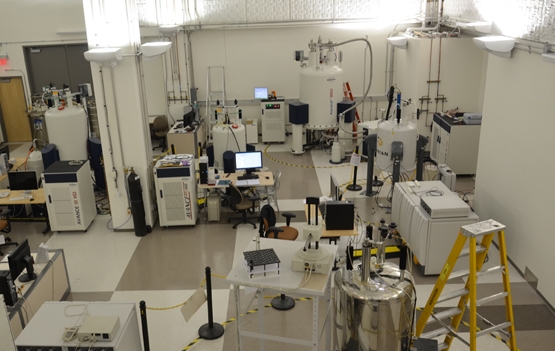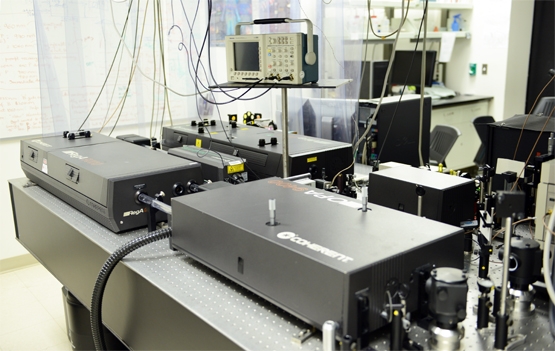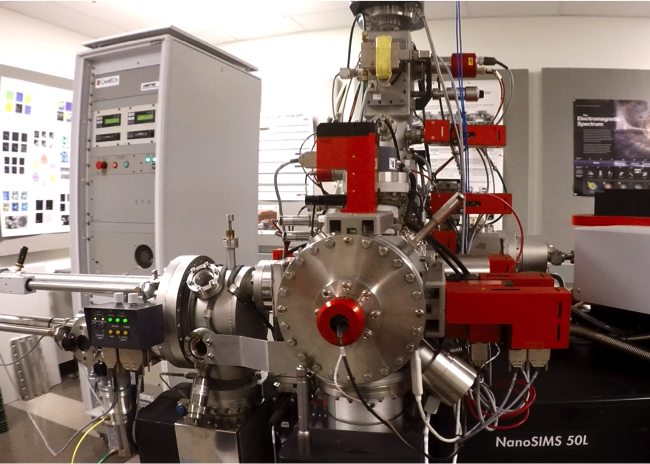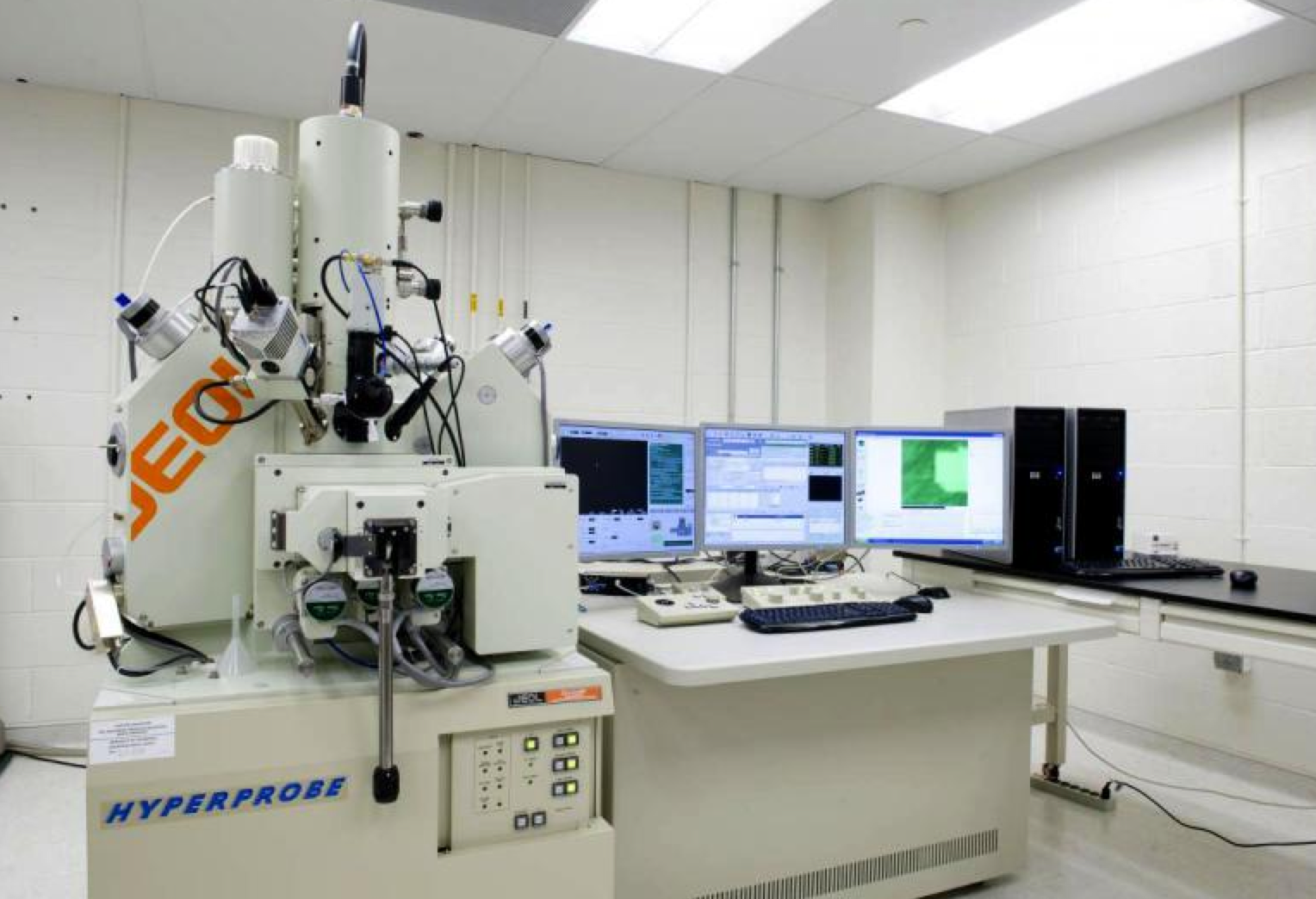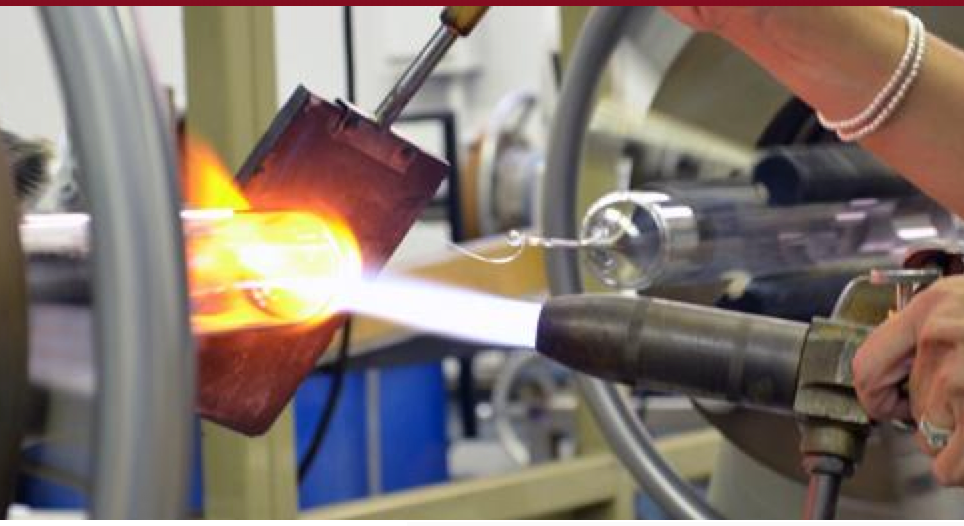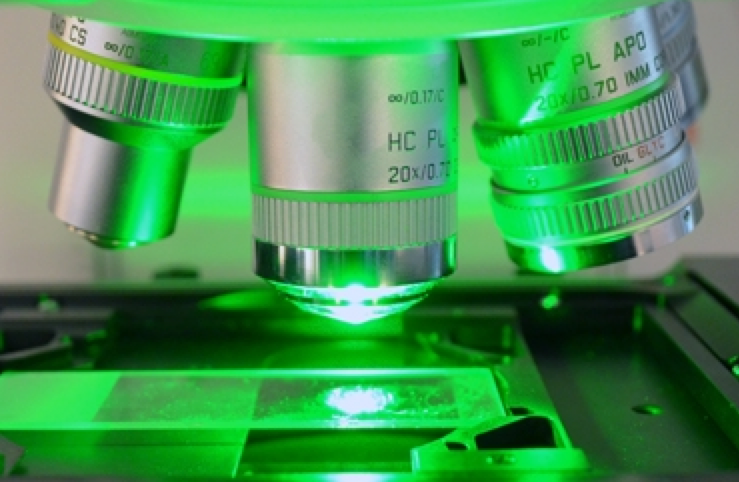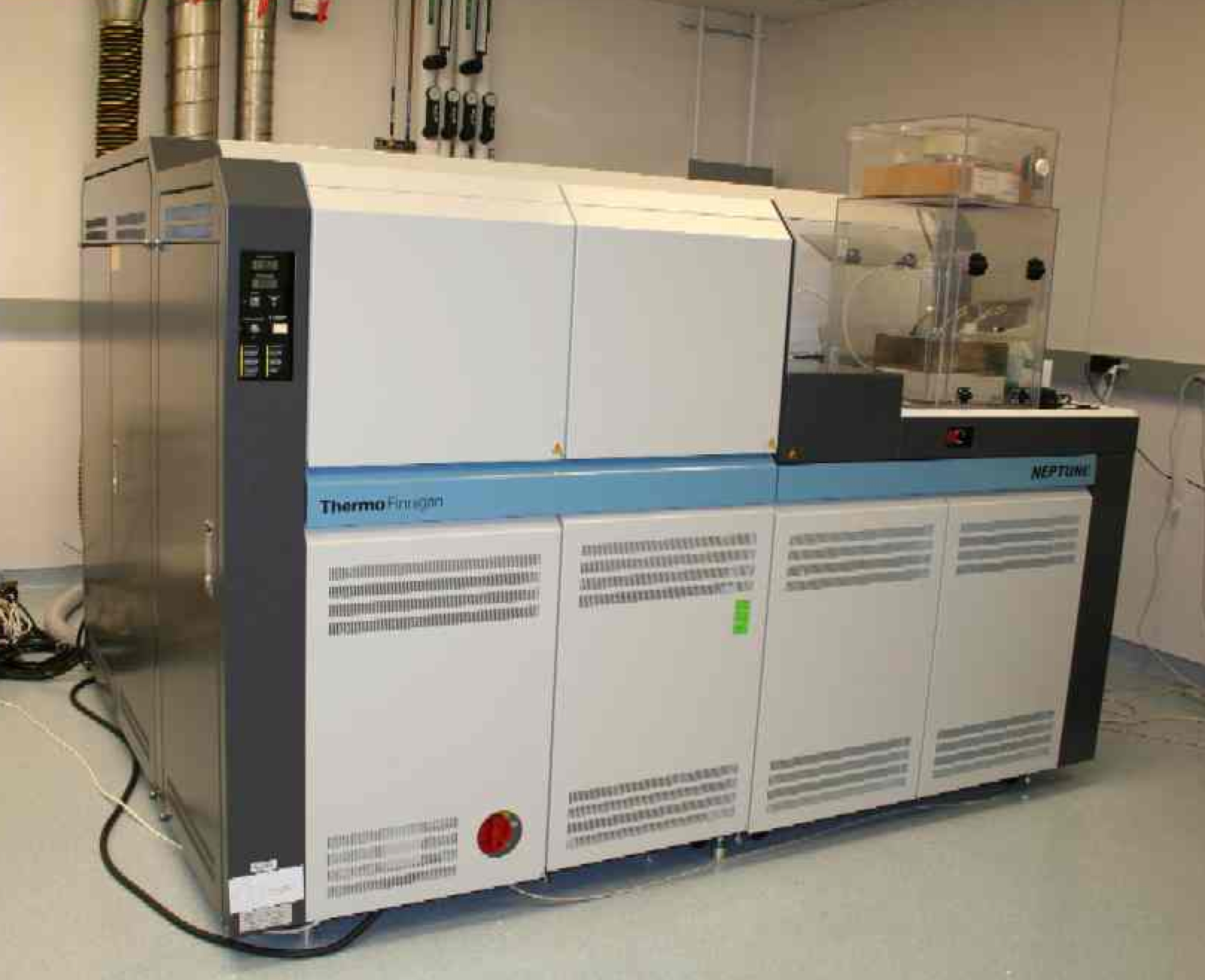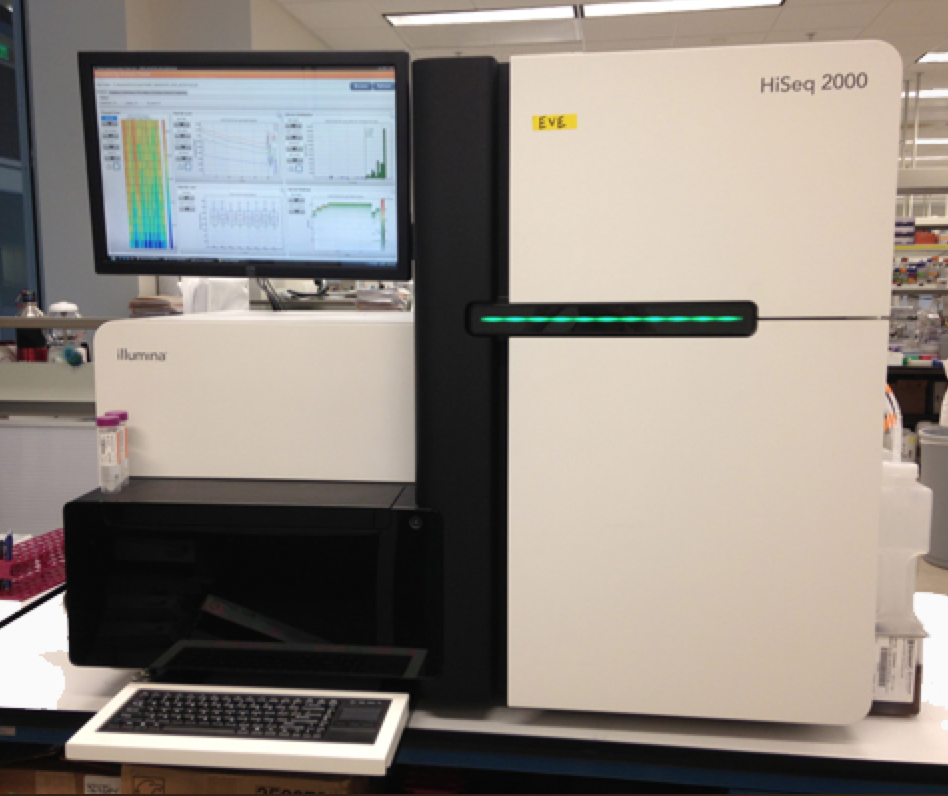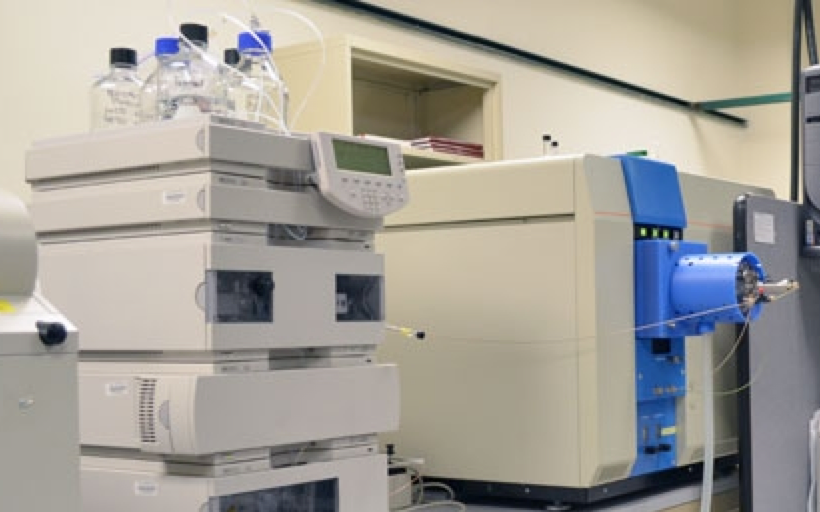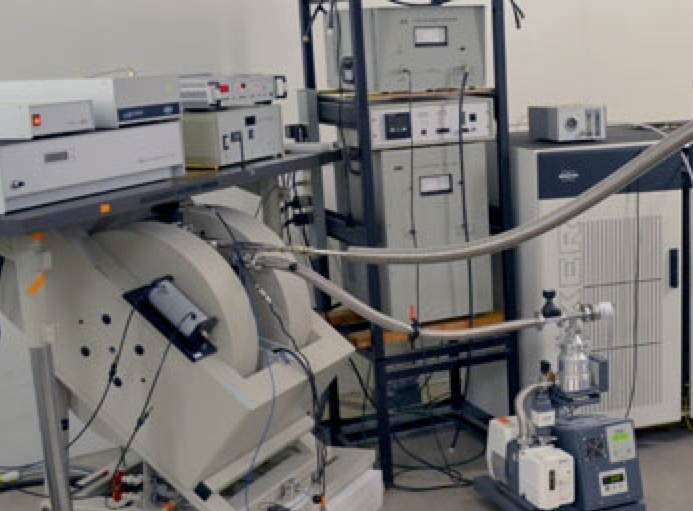Arizona State University is the largest Research I University in the US, as a consequence, our faculty and students have access to a superb range of state-of-the-art equipment and facilities for molecular science, and more importantly, the expertise and training to apply these resources efficiently in problem-solving research.
Magnetic Resonance Research Center
The Magnetic Resonance Research Center at ASU (MRRC) is the regional southwest resource for characterization and structure determination of proteins, DNA, Biomolecules, chemical compounds, and solid materials by Nuclear Magnetic Resonance (NMR). This world-class facility has 850, 800, 600 and 500 MHz NMR spectrometers optimized for protein, biopolymer and DNA structure studies, 400 MHz spectrometers for routine synthetic and drug design applications, and 300 and 400 MHz wide-bore systems for solid state NMR, diffusion and exotic NMR experiments. The 850 and 800 MHz instrument has dual solids/liquids capabilities, including Ultra-Fast Magic-Angle Spinning probe and BioMAS probes.
Ultrafast Laser Facility
This multi-user facility specializes in the development and application of time-resolved laser spectroscopy to chemical, biological and material research. It provides advanced laser technologies and instruments for spectroscopic and imaging measurements to observe chemical reactions in real time with temporal resolution down to femtosecond time scales and spatial resolution and sensitivity to the point where single molecule signals are detectable. The femtosecond spectroscopy part of the facility consists of several femtosecond Ti:Sapphire lasers coupled with transient absorption and fluorescence spectrometers, providing users with a broad range of excitation and probe wavelength for kinetic measurements. The single molecule microscopy part of the facility consists of both pulsed and CW lasers, confocal microscopes and single photon counting detection systems.
Secondary Ion Mass Spectrometry Facility
SIMS is an analytical tool permitting measurements of elemental concentration and isotope ratios on extremely tiny areas, so that chemical and isotopic variability on scales from a few micrometers down to several nanometers can be determined. ASU has one of the most extensive arrays of SIMS instrumentation and SIMS expertise in the world. SMS faculty member Professor Peter Williams spearheaded the recent acquisition of a Cameca NanoSIMS instrument, with the capability to analyze areas as small as tens of nanometers.
With this and a variety of other SIMS instrumentation, ASU researchers can apply this technique to a broad range of scientific problems, including analyses of a wide variety of natural and synthetic inorganic materials from this planet and others, semiconductors and even biological materials.
Center for High Resolution Electron Microscopy
ASU is a global leader in high resolution electron microscopy and the John M. Cowley Center for High Resolution Electron Microscopy plays an important research role in characterizing critical properties of materials. The facility houses one of the best collection of electron microscopes in the world that can probe the physical, electronic and chemical structure of matter on an atomic scale. Instruments & techniques include Ion Milling; Electron Microprobe; Scanning Electron Microscopy; Transmission Electron Microscopy; Scanning Transmission Electron Microscopy; and Aberration Corrected Electron Microscopy.
Goldwater Materials Science Facility
The Goldwater Materials Science facility provides an extensive array of analytical tools and techniques for optical, structural and surface analysis; surface morphology, chemistry & microscopy; and synthesis & processing. Widely used techniques include X-ray Diffraction & Topography; Atomic Force Microscopy; FT-IR and Raman Spectroscopy; Auger and X-ray Photoelectron Spectroscopy; Optical & Stylus Profilometry; Residual Gas Analysis; Ellipsometry; and Thin film synthesis
Ion Beam Analysis of Materials (IBeAM) Facility
The IBeAM facility uses MeV ion beams to probe the elemental compositional and structural properties of materials. The process combines the advantages of non-destructive and standardless analysis of the surface and near surface regions of solids and liquids. Techniques include Rutherford Backscattering; Proton-Induced X-ray Emission; and X-ray Fluorescence.
Glassblowing Facility
The Glassblowing Facility at ASU provides highly specialized support for teaching and research operations. Highly trained professionals design, construct and maintain sophisticated glass apparatus and glass high vacuum systems for use by university research personnel. The skilled craftsmen are particularly adept at developing prototype glass apparatus using state of the art materials and techniques. The glass working machinery and equipment available in the facility allows seals of up to 150 mm diameter in borosilicate glass and up to 100 mm diameter quartz glass seals. Upgraded glass annealing capabilities allow annealing glassware up to 2.2 meter lengths.
Keck Bioimaging Facility
The W. M. Keck division of the CLAS Bioimaging Facility supports a broad range of individual and collaborative studies by over 150 scientists in the southwestern United States. It is managed by Page Baluch and Douglas Chandler. The laboratory serves as a catalyst to consolidate ASUs bioimaging capabilities, to launch the development of new bioimaging curricula for ASU students, and to strengthen university relationships with external partners such as Barrow Neurological Institute, Mayo Clinic Scottsdale, USDA and other univerisites in the Phoenix metro area. The W. M. Keck laboratories house some of the latest bioimaging technology including, laser scanning confocal microscopy; video light microscopy; live cell imaging; and multiphoton microscopy.
Keck Laboratory for Environmental Biogeochemistry
The W. M. Keck Foundation Lab supports environmental research by allowing scientists to be directly involved in all aspects of isotope ratio measurements. The lab houses clean rooms, ICP-MS and muticollector ICP-MS instruments and Isotope Ratio Mass Spectrometers, in addition other separation and support instrumentation.
Genomics (Next-Gen Sequencing) Core
The DNASU Sequencing Core Facility within the Center For Personalized Diagnostics offers Illumina DNA sequencing services on the HiSeq 2000 and MiSeq platforms. This technology offers scientists and researchers both within ASU and worldwide the ability to perform a full range of Genomic applications including Whole Genome Sequencing (WGS), RNA-Seq, CHIP-Seq, Targeted Resequencing, de novo sequencing and metagenomic sequencing.
High Resolution Mass Spectrometry Facility
The High Resolution Mass Spectrometry (HRMS) laboratory provides analytical services to ASU research community.Currently, there are 2 high-resolution double-focusing magnetic sector mass spectrometers installed. Ionization techniques for sample analysis include electron ionization (EI), chemical ionization (CI), fast atom bombardment (FAB), electrospray ionization (ESI) and atmospheric pressure chemical ionization (APCI). In addition, GC-MS, LC-MS, and linked-scan experiments can be performed.
X-Ray Diffraction Facility
The X-ray Diffraction Facility provides a variety of services including single crystal structural analysis, identification of materials, crystal orientation, structural database access and more. Instruments include a Brucker D8 Advance Powder X-Ray Diffractometer, a Laue Camera for Crystal Orientation, a Siemens D5000 Powder X-Ray Diffractometer, a Standard Powder X-Ray Diffractometer, and X-Ray Database Workstations and Single Crystal Structure Analysis Facilities.
Electron Paramagnetic Resonance Facility
The electron paramagnetic resonance (EPR) facility is equipped with a Bruker ELEXSYS spectrometer operating at three different frequencies (S-band, X-band and Q-band). There are several cryostats to perform experiments using either liquid nitrogen or liquid helium as cryogens.
